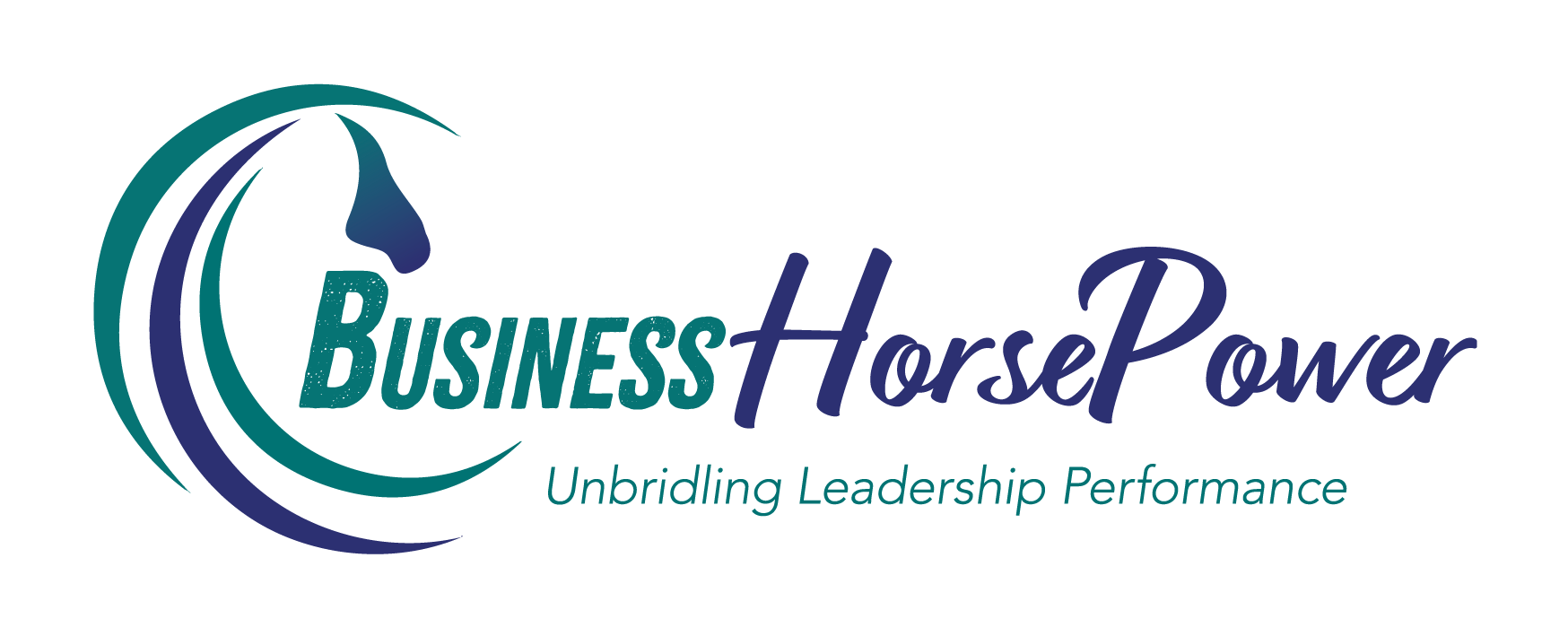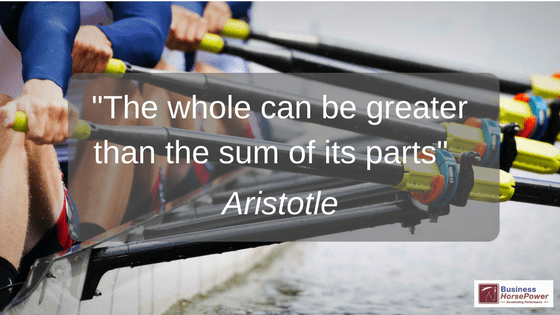
by Julia Felton | Jul 26, 2017
How come some teams are successful and others aren’t? I’m sure we’ve all been in teams that work well and other teams that don’t, and if you’re like me being in a dysfunctional team is super frustrating. So what are the traits of high performance teams and how do we ensure that any team we are part of adopts these traits.
Google was inspired to conduct some research to codify the secrets of team effectiveness and to examine why some teams excelled whilst others fell behind, and what they discovered surprised them. .
Before this study, like many other organisations, Google Execs believed that building the best teams meant compiling the best people. It makes sense. The best engineer plus an MBA, throw in a PhD, and there you have it. The perfect team, right? However, in the words of Julia Rozovsky, Google’s people analytics manager, “We were dead wrong.”
Eager to find the perfect mixture of skills, backgrounds, and traits to engineer super-teams, Google put together a team of statisticians, organisational psychologists, sociologists, engineers, and researchers to help solve the puzzle. Over a two year period they studied 180 Google teams, conduct 200-plus interviews, and analysed over 250 different team attributes. However, at the end they still had no clear pattern of characteristics that could be plugged into a dream-team generating algorithm.
This is because they initially failed to consider the behaviours of the group and how that impacted the collective intelligence of the team. It seems that the dynamic of how the team moves through the cycle of form – storm – norm – perform is pivotal to the ultimate success of the team.
I’m sure you’ve heard the quote by Aristotle, “The whole can be greater than the sum of its parts” and intuitively we all know that two heads are better than one but it is how these two heads collaborate and inter-act together that determines the success of the group. Great teamwork is not based on individual brilliance but rather on the dynamic and relationships that exist between the team members.
So here are the five traits of a high performing team that Google eventually identified:
- Dependability – Team members get things done on time and meet expectations.
- Structure and clarity – High-performing teams have clear goals, and have well-defined roles within the group.
- Meaning – The work has personal significance to each member.
- Impact – The group believes their work is purposeful and positively impacts the greater good.
- Psychological Safety – An environment where opinions are listened to and team members feel heard
I’m sure we’ve all been in meetings and, due to the fear of seeming incompetent, have held back questions or ideas. I know I have. It’s unnerving to feel like you’re in an environment where everything you do or say is under a microscope. But imagine a different setting, a situation in which every team member feels safe to take risks, voice their opinions, and ask judgment-free questions. A culture where managers provide air cover and create safe zones so team members can let down their guard. That’s psychological safety.
Reviewing these five traits we can see that team success is as much to do with the team dynamics and the business culture as with individual skill sets. In an age where teamwork is becoming increasingly important to respond to the uncertain world in which we live, the need to hire team members that are a good cultural and values fit is essential. Just imagine the impact of having someone in your team who is not aligned with the other team members. Not only do they feel uncomfortable but they also impact the harmony of the group, and in the worst situation can negatively impact the entire team. John Maxwell refers to this as the “law of the bad apple” and if not dealt with swiftly can cause silo mentality to develop within the team.
It is also interesting to note that the research highlighted that high performance teams feel like they are making an impact. In other words the team is purpose-driven. They exist to create an impact that this bigger then themselves and have some broader influence on the world. Increasingly, I am coming across more and more people who are more consciously aware of their impact and want to be part of something that is making a difference in the world. After all, in many ways we all want to make a contribution and be in service to others, as that just fulfils one of our basic human needs.
What contribution do you want to make and how does that impact how you show up in a team? If you’d like to explore what your purpose is and how you can make a real difference in the world, then let’s have a powerful conversation, as I know when I unlocked my purpose it made a massive difference to my own self-worth and business success.

by Julia Felton | Jul 19, 2017
How to have powerful conversations is a real challenge in business. And this cartoon that I came across on LinkedIn recently shows you exactly why. Both people are right and cannot understand why the other can’t see it. Can you relate to that?. Being certain that something is correct when your colleague is adamant that it isn’t.
I know I have been in this situation on more than one occasion. When this happens it is easy for the situation to escalate out of control with both parties believing that they are right, because after all they are. The only solution in these situations is to step into the other person’s shoes and to see things how they see them. Only then you will realise that they are also right and the confusion is coming from the fact that you are both seeing different things.
Now of course as readers and observers to this situation we can easily see the problem that these two people have, as we are in the position to see the challenge through yet another lens. Yes, that’s right there are always three positions of perspective to any situation. These are:
In this situation the man on the left hand side of the page is seeing the world through his lens and that means that the number is 6. If the man stepped across the page and stepped into the shoes of the man on the right hand side of the page, he would see that the number is 9. And finally if the man stepped away from the situation and looked back, he would clearly see, as we do, that both men are right but it is just how they are viewing the situation that is causing the confusion.
Armed with this information, the two men can now have a powerful conversation, in a calmer manner, as they can appreciate the different perspectives on what is happening. The man on the left is able to appreciate the folly of his insight and so make a much better decision.
These three positions of perspective can be used anytime you have to have a difficult conversation with someone, or if you have to make a difficult decision. What I love to do is to put three peices of paper on the floor. Then one by one I stand on each peice of paper and reflect on how I am feeling in that space. How does the situation change when I view it from a different perspective. It is amazing what insight you can get into other people’s intentions and feelings when you do this.
I remember the first time I used this model was when I was deciding what to do about my racehorse Charlie. My three month loan period was fast approaching and I had to make a decision about whether I wanted to buy him. Although I wanted to, I knew he also had some underlying lameness problems which we hadn’t got to the bottom of, and given I already had one lame horse I didn’t want another one. So from my perspective the only option was give him back. However, when I stepped into the position of Other I realised that the owner was happy not to have the responsibility and upkeep for Charlie, so they didn’t really want him back. Finally, when I looked at the situation through the lens of the observer I realised another solution existed and that the owner might just consider extending the loan for another 3-6 months. Armed with all these different insights I was now able to make a much more informed decision about how to proceed.
And as many of you know, Charlie stayed with me and eventually, some six months later I brought him for £1. That was something I could have never imagined would be possible initially.
So what opportunities are available to you right now, if you could just look at them from another perspective? There are probably a lot more than you ever imagined.
The Art of Authentic Communication
If you enjoyed this post then I know you will enjoy the Art of Authentic Communication workshop I am running this Friday 21st July, along with the horses. There are still a few places left if you want to come along. During this experiential workshop will learn how to:
- Use the three diferent dimensions of communication
- Engage in listening and communicating more effectively
- Mediate discussions amongst team members
- Gain an insight into different personality types and their preferred method of communication
- Become more assertive
- Use your body language as a tool for communication
- The importance of non-verbal communication
- Influence team members and inspire them to follow you.
To book in simply click here. I can’t wait to share all this great information with you, as I know that mastering the art of authentic communication can seriously improve your life and business.

by Julia Felton | Jul 12, 2017
Are you ready to break free?
Today I wanted to share the words of Natasha Bedingfield’s song called Wild Horses.
These words really resonate with me right now and I know that often many of my clients feel trapped in their lives and wish they could be free.
The great news is that we all the have ability to Grab The Reins and Lead Our Life, so if you are feeling stuck right now register for one of limited number of complimentary discovery sessions I offer each month.
During our call you will:
- Uncover hidden opportunities to create more income in your business
- Discover how you may be unconsciously sabotaging your business and its success and break through those limitations
- Create a clear plan that describes in detail the steps you need to unleash the hidden potential in your business
- The one simple step you can take immediately to get into action
Click the link here to register for one of the limited number of complimentary discovery sessions.
Ooooh I feel these four walls closing in
Face up against the glass
I’m looking out, hmmm
Is this my life I’m wondering
It happened so fast
How do I turn this thing around
Is this the bed I chose to make
It’s greener pastures I’m thinking about
Hmm, wide open spaces far away
All I want is the wind in my hair
To face the fear but not feel scared
Ooh, wild horses I want to be like you
Throwing caution to the wind,
I’ll run free too
Wish I could recklessly love like I’m longing to
I want to run with the wild horses
Run with the wild horses, oh Yeah, oh oh, ye-yeah
I see the girl I want to be
Riding bare-back, care-free
Along the shore
If only that someone was me
Jumping head-first, head-long
Without a thought
To act and down the consequence
How I wish it could be that easy
But fear surrounds me like a fence
I want to break free
All I want is the wind in my hair
To face the fear, but not feel scared
Oooh, wild horses I want to be like you
Throwing caution to the wind, I’ll run free too
Wish I could recklessly love like I’m longing to
I want to run with the wild horses
Run with the wild horses, oh
I want to run too
Oooh oh oh oh
Recklessly emboundening myself before you
I want to open up my hear
Tell him how I feel, ooh ooh
Oooh, wild horses I want to be like you
Throwing caution to the wind, I’ll run free too
Wish I could recklessly love like I’m longing to
I want to run with the wild horses
Run with the wild horses
Run with the wild horses
Ooh ooooh ooh ooh ye-yeah yeah oohh
I want to run with the wild horses, ooooh
Did you enjoy that?. Did you resonate with the words and are you ready to break free and grab the reins? If you are then please connect with me and let’s have a conversation about how I can help you.

by Julia Felton | Jul 5, 2017
This week I’ve been working a lot with different teams and they have all been experiencing the same challenge, getting the right people in the right job. It is imperative that you master this as it is the foundation stone for creating a high performance team. Whether you are a recruiter, candidate or business owner it is essential that you find the right person or job role that is a match for you. I know given the current economic conditions it is tempting for a candidate to apply for any job for and for a business owner who needs to find resource to accept a less and ideal candidate.
Stop. This is such a flawed strategy for both parties and ultimately ends up costing everyone valuable time, energy and money as:
- The candidate ultimately won’t enjoy the job. Sure they might be able to do the role, but are they giving 110% to it. If the role is not aligned to their own passion and purpose they simply won’t be as productive or creative in the role as they could be.
- For the employer they are not utilising the employees best strengths and so ultimately the productivity and engagement of the team member declines and the net result is less profitability for the business.
What both parties crave for is a situation where the team member is working to their strengths, and delivering massive value to the business . This occurs when the team member is in a state we call flow. Put simply, flow is the path of least resistance. When team members are in flow, productivity rises, results increase, occurrences line up, everyone has more fun and feels more connected to the organisation and it’s goals.
When a team member is in flow they feel energised, focused and fully engaged in the task at hand. Often there can be a distortion of time as their internal clock does not seem to match the external clock – perhaps you have experienced this when you have been doing something you love and time just literally seems to fly by. That’s a time that you were in flow.
So how do you know if you are in flow:
- If you are feeling stressed, overwhelmed or anxious, then it’s a fairly good indicator you are out of Flow.
- The opposite is true when you are in Flow, you feel joy and even rapture whilst performing the task. In the work place, this results in a harmonious environment.
The challenge I come across time and time again are team members that are in the wrong roles. They are not playing to their strengths and as a result the are sabotaging the success of the business. This is not usually intentional it is just that unless you are in flow you are unlikely to be able to access the hidden 90% of your potential that exists.
Imagine the benefits if all your team members were operating at or above their peak performance level. Imagine what an impact that would have both on the motivation of the employee but also on the organisational results. Customers would feel more cared for, projects would get delivered on time and the harmony in the workplace would be infectious. This is the type of workplace where trust pervades as everyone is doing their role to their very best.
One tool that I use to help my clients and their business get into flow is something called Talent Dynamics. Based on an ancient Chinese philosophy, the I Ching, it allows each person in a team or organisation to understand the quickest and easiest way for them to get into and stay in Flow by working with their strengths. It also helps them understand where they are most able to add value to the organisation. Simply, by understanding the value you contribute to a team, then you can immediately help identify potential Business Development opportunities.
If you manage a team then by profiling your whole team you can create mutual understanding and get the whole team into flow. Understanding the strengths of team mates and how they contribute and add value to the business allows you to better communicate and it is easier to gain trust and respect with each other and so deliver results in performance and profitability.
So whether you’re a business owner or a candidate make sure that you find the perfect role for you – one that speaks to your strengths and where you can add real value.
The first step to finding out your strengths is to identify where you are most trusted in business. You can take the quick 30 second assessment at http://bit.ly/trusttest.
If you’d like to find out more about creating high performance teams or discover further how you can add value to the team you work in just book in for a complimentary conversation here or email me at julia@businesshorsepower.com
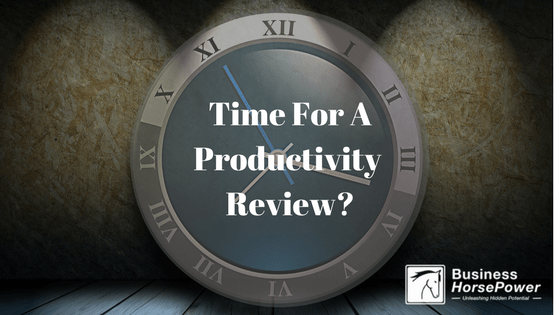
by Julia Felton | Jun 28, 2017
With the first six months of the year very nearly completed, are you on track to achieve all your goals for 2017? If not maybe its time for a productivity review to assess what you are really doing every day. Are you spending time on high value income producing activities everyday, or are you getting distracted by the loads of important and urgent tasks that come across your desk, and into your email box each day.
I’ve spent the first half of the year honing my productivity skills with a mentor and it has been time well invested. I now have a new approach to how I block and tackle my days. I’m now achieving more and also having more fun doing it. So here are some tips to get you back on track.
- Take stock of where you are. You need to know where you are right now and where you want to get to in order that you can figure out the next step. Just think about it. If you are in Paris and you have no idea of where you want to visit, it doesn’t matter what directions you are given, they won’t get you to where you wnat to go. However, if you are in Paris and know you want to visit the Eiffel Tower then with some good help and advice someone can show you where you are the range of options to get there. A mentor can do just the same for you in your business, showing the plan to help you achieve your results based on where you are right now.
- Keep track of your most important commitment—the one you make to yourself. Productivity guru David Allen, author of Getting Things Done, contends that commitments to yourself are qualitatively different than those you make to others because your conscious mind can essentially “lose track” of them. While your boss will remind you of your commitments to her, your mind doesn’t know your email address. What Allen calls your “mental RAM” will continue to expect those commitments to be fulfilled, but you may have forgotten about them amidst the clamour of your work life. The result is the worst kind of stress, because you feel the pressure but you can’t quite figure out where it’s coming from. In his most recent book, Ready for Anything: 52 Productivity Principles for Work and Life, Allen offers several effective tips for capturing these “open loops” and closing them, either by completing, canceling or renegotiating them.
- Practice saying “No.” Do you find that your work has bled almost seamlessly into your personal life? One of the answers to this problem is often the word, “No.” You have to acquire the skill to utter that magic word in order to create some boundary around your work and create the opportunity for personal relaxation and renewal. The key is to steadfastly turn down obligations unless they further your priorities.
- Invest in your health. This goes without saying, right? Actually, for most of us, it also goes without doing. Yet, apart from the obvious benefits of better health, increasing your physical well-being can yield tremendous benefits in terms of your productivity at work. In the view of Jim Loehr and Tony Schwartz, authors of The Power of Full Engagement, it is managing your energy—starting with your physical health, including diet, sleep and exercise—that is more important than managing time in improving your personal productivity.
- Protect your mornings. Author and motivational speaker Brian Tracy refers to the “magic hour” after you get up—a time to protect yourself from the news and other distractions and concentrate on your day: What you are going to accomplish and exactly how you are going to do it. Many experts report that most people are naturally more creative and energetic in the mornings, which is an argument for applying yourself to your most challenging tasks then and saving the routine housecleaning until later in the day, one of the notions at the heart of the Morgenstern’s Never Check Email in the Morning.
- Pick a system—any system—just pick one. How many different places do you squirrel away information? Email? Yellow pads? Daily planner? PDA? Post-it Notes stuck like a yellow halo around your computer screen? It might take a serious investment of time to sort through the options, but decide on one…and then use it. Each of the productivity experts referenced here, and the hundreds of others in the bookstore, will claim their system is the best. But most of them also acknowledge that any system that you actually use is going to be better than no system or the chaotic structure that so many of us have fallen into. As Allen puts it, in choosing an organiser, whether high-tech or a stack of 3×5 cards, go for “simplicity, speed and fun.”
- Fun? Wait, did you say “fun”? Another important tune-up is to get reconnected with what’s happening to your personal life. Maintaining your personal relationships, relaxing and—gasp!—having fun are critical to your mental health, which, in turn, affects your energy, creativity and productivity.
But the most important tip of all is to build regular review and reflection time into your calendar. There are countless ways you can improve your productivity, lower your stress and enhance your physical and emotional well-being. But they all require some focus, some thought and some energy. The key is to treat the process of personal renewal itself as a priority. To use Stephen Covey’s classic “maintenance” metaphor, think of this as “sharpening the saw.” Schedule it. Place it in the priority queue, assign time to it, and actually give it some of your attention. Your time will be well spent

by Julia Felton | Jun 21, 2017
If you want to get the best from your team you need to learn to connect, engage and communicate with them. Even if this isn’t your natural bent, you can learn to do this. In fact, the reason I’m writing this post today is because one of my clients said to me this week “Julia, one of the things I appreciate about you is that you’re so good at asking questions. I’m not. That’s just not how I’m wired.”
To which I responded, “Thanks for the compliment, but I’m not wired that way either.” Learning to use questions to lead isn’t a natural ability for most of us, it’s an acquired skill. And it’s not that hard to do on a skill level, it’s only hard on an implementation level. So, here are a few ideas to help you get started on unleashing your inner questioner.
1. Learn to see yourself as a developer of talent, not the boss. At the end of the day, most of us like to be tellers because we see ourselves as “the boss.” When we own the boss hat, most of us like to be in the teller role (I hired you. I pay you. Do what I tell you to do). And as long as we own that mindset, we’ll struggle with asking questions. However, if you can make the mental shift from boss to talent developer, you’ll begin to see your role completely differently (which is key because talent developers create leverage, whereas bosses don’t).
2. Make questioning your first response. I know this may feel pedantic, but when someone asks you a question, ask them a question back. Refuse to just give the answer (something that most of us who are male will always struggle with :-). Instead, when someone asks, “So, what do you think I should do?” throw it back to them, “First, tell me what you think you should do?” If they say, “I asked you first.” Just respond, “Well, how do you think I’d respond?” Return question for question. As hard as this is, don’t give the first answer. This was something I was challenged with when working in my corporate role, but asking questions helps team members become more resourceful and ultimately take more responsibility for their actions. In today’s world of mobile communication it is just too easy for team members to abdicate any responsibility and just ask their boss. But this does not help us develop leaders of the future.
3. Open your team conversations with questions. Instead of saying, “Pete, we have a problem here. And here’s what I want you to do.” Open the conversation with a wide open question. “Pete, as you know, we have a problem here. What do you think is creating it?” Or, “What’s your best thinking about how to solve this?” Or, “Do you have any ideas about how we can eliminate this in the next 30 days?”
Yes, there is an art to asking good questions (for example, wide open questions are better for creating independent thinkers), but what’s more important is that you embrace the principle that being a questioner is a better leadership choice than being a teller. Once you do that, you’ll acquire the skill set over time through trial and error. But you’ll never get there if you don’t embrace this concept as a core leadership practice.
So do you? Do you really believe that being a leader who leads through questioning is better than being a leader who leads by telling? I hope so because the choice you make will have profound consequences for you and your company for years to come. So, choose wisely! Remember,
“If you want to get the most from your people, then you need to draw the best that is in them—out of them.”
By the way, if you’re thinking, “But asking questions sure takes a lot more time than telling,” then you probably don’t own the idea that a leader isn’t a boss, a leader is a talent developer who leverages the time, talent, treasures, resources, intellectual property and connections of their people to produce a result.
Oh, and one last thought. This principle and practice holds true whether you are leading a two person team or a two thousand person team.
Go forth and ask better questions so that you can connect, engage and communicate.

by Julia Felton | Jun 14, 2017
“There’s no such thing as a self-made millionaire. Only TEAM-made millionaires”
In last week’s Wednesday Wisdom we discussed the different leadership positions and the fact that in the herd leadership is shared. A horse herd operates as a team and to my mind teamwork is the most effective way in business to create success. Being in business is tough and there is simply no way that you can do everything by yourself. Each of us has own our brilliance and working with team members enables you to focus on your brilliance whilst letting others do theirs. The net effect is that everyone is in a state called flow, which is the state of least resistance. Then business becomes easy and fun.
But how do you get the best out of team members and inspire them to give of their best to help your business grow and be successful.? The answer is to ask better questions. So are you a teller or a questioner?
In other words, when you’re working with your team members (or outsourcers) do you tend to tell them what to do or do you engage them in a conversation by asking questions?
If you’re like most entrepreneurial leaders, chances are you’re the former. If that’s true, then my question to you is “How’s that working for you?”
My guess is it’s not working out as great as you’d like it to. In fact, I find that most entrepreneurial leaders are pretty frustrated with the people they’re “leading.” See if any of the following statements ring true for you
- “They never do what I tell them to do!”
- “It always takes her ten times longer to do what I asked her to do. If she’d just listen to me, she could get it done in one tenth of the time it’s currently taking!”
- “I can’t understand why it’s taking him so long to do what I asked him to do.”
- “I can’t figure out why she just can’t follow my directions.”
- “I didn’t hire him to think. I hired him to do what I tell him to do.”
Ouch! And I fully understand those sentiments. As an entrepreneurial leader myself I understand why you want people to do what you want them to do in the way you want them to do it (after all, you are the BOSS, right? And it is YOUR company. And you do pay THE BILLS. And they do work for YOU, right?).
Furthermore, I get the whole driven part of the entrepreneurial personality. According to my Talent Dynamics profile I have lots of dynamo energy so, by personality, I like being a teller. I like saying, as chances are you do, “Here’s what I want you to do. Now, just go do it. No questions. No debate. Just get it done EXACTLY how I told you to do it.”
But, as you well know, that approach doesn’t produce the best results
The Problem With Being a Teller
What I learned, and hopefully you are as well, is that being a teller is a counterproductive leadership approach. Why? For a number of reasons. I’ll give you three.
- Telling doesn’t create buy in. As you know, people own what they help create, which, by definition means they don’t own what they don’t help create. So, if you or I say, “Billy, I want you to do X in Y way,” how much does he own that? Virtually nil. And if someone doesn’t own a task or project or process/procedure or event or strategy or tactic, the chances of them producing the best result will always be lower than if Billy is involved in creating the solution. Telling doesn’t work because it doesn’t create buy in or ownership.
Note: We’re not talking about following systems here. We’re talking about solving problems or creating something new.
- Telling doesn’t produce the kind of people you want/need. In other words, if you’re a teller, you’re NOT developing your people to be their best (whether that’s to be a better leader or problem solver or innovator or coach or process person, etc.). Or to put it another way, if you or I are always in the telling position, then we’re not creating independent thinkers. And if we’re not creating independent thinkers, then we’ll have to keep doing all the thinking—which leads to the third reason why you don’t want to be a teller.
- Telling doesn’t create leverage. If you or I still have to do all the thinking, then we’re not creating leverage. We’re simply creating more work for ourselves. We become the bottleneck to growth. If our people don’t own the task, then we have to invest more time in managing and leading the task. If our people aren’t really excited about a task or project, then more conflict will occur, which means we’ll have to invest more time. Or, if the only people we’re happy with are people who will just do what they’re told, then we’ll always put a lid on the quality of the kind of employee we can hire (which, again, kills leverage).
Any way you add it up, being a teller, just isn’t the smartest leadership choice you or I can make if we want to grow a fast growing business or organisation.
The Better Option
The better option, if you want to get the best from your team is to learn to connect, engage and communicate with them. Even if this isn’t your natural bent, you can learn to do this.
Next week I’ll be sharing my best tips on how to connect through using questions.
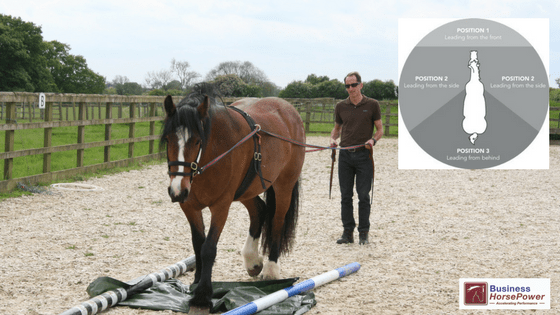
by Julia Felton | Jun 7, 2017
One of the biggest insights that has been coming up for people recently, whilst attending my leadership workshops, has been related to their preferred leadership position. Very often when we think of leadership we assume that the leader has to be at the front, leading the charge. And yes the leader does need to set the direction for the business, but they don’t need to stay in that leadership position all the time. Sometimes they might find that leading from the back, or indeed the side might be a better solution.
So What Are The Three Positions of Leadership?
In his book Dances With Horses, Klaus Ferdinand-Hempfling identified three positions of leadership that operate on a pull-push basis and when used appropriately can achieve significant results. Position One is Leading From The Front. This leadership position is most effective in an emergency, when you need people to follow you with no negotiation. It is also a great leadership position for the CEO of a business who needs to set the strategy and direction of the business and show others where to go. However, for team members it can dis-empower them as there is no flexibility to make decisions.
Position Three is Leading From Behind. From this position you can see everything happening in front of you and so can easily course correct if things go off track. It’s a leadership position where you effectively orchestrate the energy of the group and add momentum to what is happening. Team members feel empowered however, unless the team know where you are heading, chaos can erupt as everyone heads in different directions.
Leading From The Side is Leadership Position Two. It is a very collaborative style of leadership and a great place to be to form connection with your team members. It is the place of true partnership, and is a role that all great leaders must engage in to build relationships. However, if a leader stays in this position for too long nothing gets accomplished as no-one is leading the process.
The three different positions of leadership are derived from the way that a wild horse herd operates. Typically what you will find is that within the herd there is a lead mare who operates at the front of the herd and it is her job to find suitable grazing for the herd. She navigates where to go based on the weather conditions and the needs of her herd. Do they need food, water, shelter? Whatever they need she seeks out for them.
However, in the herd leadership is not a one horse job. It is shared and this is why you will always find the lead mare working in collaboration with the lead stallion. He positions himself at the back of the herd. From here he has great perspective on what is happening in front of him. He is easily able to keep an eye out for approaching danger and keep the herd united by influencing the direction and pace that everyone is moving in.
When grazing the lead mare will often mingle with the herd and adopt leadership position two whilst checking in to ensure the rest of the herd are safe.
Great leaders recognise that the art of great leadership is knowing when to adopt each leadership position, and be able to effortlessly move between the different positions as required. That said, in my experience leaders often have a preference for one position of leadership over another. Do you know what yours is?
Once you know your preferred leadership position you can then enlist the support of others with differing preferences to help you share the leadership role. After all I think we would all agree that in todays rapidly changing environment there is simply no way that just one person can shoulder all the leadership responsibility. It needs to be Shared amongst the team, so that everyone takes responsibility and contributes to the business success.
This is what one of my clients realised after learning about the three different leadership positions: “No wonder I’m exhausted. I’ve being trying to perform all three leadership roles myself. I now see how one minute I’m setting the business strategy (position one) then I’m running back to position three to energise the business, then back to position one, and then next position two. Now I recognise this I can see how I need to enrol others to help me share the leadership. This will give me more energy and focus and help us make our team more productive”.
If you would like to experience the three different leadership positions and discover your preferred role, then why not join me on my next open workshop, where we will be exploring how to Lead On-The-Hoof and develop the leadership skills you need to be successful in today’s environment. Simply click here to find out more.
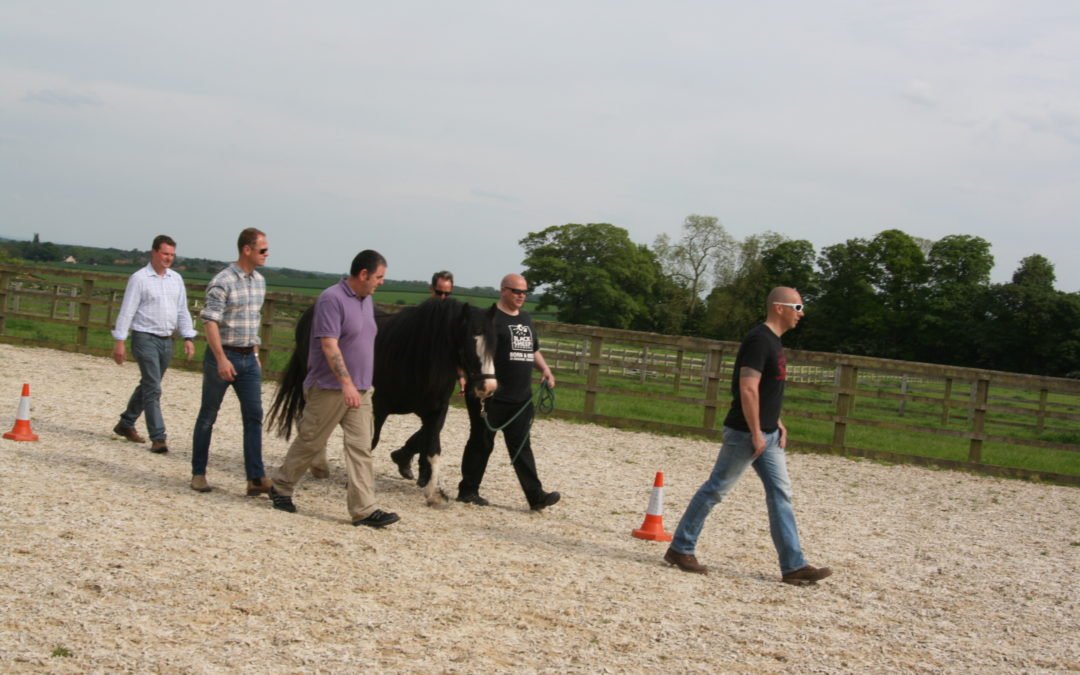
by Julia Felton | May 31, 2017
2017 Summer Team Building Programs
Transforming Leaders and Teams
♦ through natural horsepower ♦
Summer is just around the corner – which means now is the perfect time to plan your team building event. Great leaders know that when team members have a chance to connect and build relationships, it can have a profound effect on team cohesion and productivity. They also know maintaining an effective team is a continuous process and it’s important to consistently make sure their team is working well together. Are you looking for something that:
- Is new and different, and, combines fun with purpose?
- Deepens positive interaction and connection between your team?
- Serves as a catalyst for more team chemistry?
- Harnesses the best of your team?
- Allows you, the team leader, to participate fully with your team?
Then get your team out of the office and into the field for an experience they’ll never forget!
Call now to schedule your Half-Day, Full-Day Session or to discuss our Retreats!
When you decide to bring your team out to the Business HorsePower herd (or ask us to come to you, which we can often do), we work with you to understand your team’s needs and design a customised experience that meets your objectives. Your team will engage in a variety of activities that seem simple, yet offer complex lessons in collaboration, partnership, trust, and commitment. Sessions are a combination of individual and small group exercises with the horses; observation, personal reflection and group discussion; individual, coaching and peer feedback. We can also:
- Administer team trust or team dynamic assessments. Or, incorporate your existing team or leadership assessments tools.
- Reinforce through our curriculum any current team or leadership development program you currently have in place.
- ‘Book end’ your team building with horses session with pre-session facilitation to more deeply prepare you, and, web-based post-session follow up to sustain your team’s learning.
Horses are Team Players
- They live in teams and have a sophisticated understanding of team work – their interactions with your team will reflect your team’s dynamics.
- If you want a horse to cooperate and follow you, you must make a genuine connection with them and demonstrate your commitment to partnership.
- They seek out and willingly respond to trustworthy leadership.
- Horses pick up nonverbal messages that we miss, or are unaware of giving. They give us clear feedback on when we’re effective – and when we’re not!
The Benefits of Team Building
There are many benefits to team building and these include:
- Gaining valuable insight into emotional intelligence and its impact on leadership, relationships and team productivity.
- Practicing problem-solving ‘on the go’ and in the face of new challenges and uncertainty.
- Becoming more focused and present as a team.
- Creating effective and loyal followership; inspire commitment.
- Deepening awareness of where your team gets stuck and learn how to shift ineffective behavior patterns.
I invite you to join me this summer for a team development experience with horses. I guarantee my work. If you feel the session does not meet your expectations, tell me by lunch time and you’ll receive a 100% refund.
To find out more simply give me a call on +44 1423 788229 and we can then co-create an experience that delivers a massive ROI for you and your team.
If you are a private individual then our next open programme which is on June 23rd might be better for you. You can find all the details here.
I can’t wait to hear from you.

by Julia Felton | May 17, 2017
As an entrepreneur one of my values is continual learning. I can’t get enough of it because I know that every time I learn something new I grow and new opportunities open up for me. And you don’t have to just be an entrepreneur to keep learning, anyone has the opportunity to keep learning. And today continual learning is even easier due to the mass of free educational material available on the internet.
This is one of my favourite quotes on learning: “If you are not willing to learn no-one can help you. If you are determined to learn no-one can stop you”. Learning and education are key tools that you can use in business and life to expand your circle of influence, create new contacts and help uplevel your own confidence levels. The more you know the more you can share your knowledge with others and help them along the journey.
I know that at a deep level I love educating people about the possibilities that are available to them. That’s one of the reasons I am a trainer, coach and consultant. It allows me to fulfil my purpose of being in service to others and helping them realise their hidden potential. One of the teachers on my journey has been Roger Hamilton. He is the creator of Wealth and Talent Dynamics and the founder of GeniusU. What I love about his teaching is the way that all his work is based on the five elements and he manages to link practical business tools with lessons from the natural world. He has been a big influence on my work and continues to inspire me.
So when I heard about this training he is offering I just wanted to share it will you as I know it will transform your life whether you are a business owner or not. Roger is giving away a great Entrepreneur Inspiration ebook, which I have read, and is packed with loads of examples of how other entrepreneurs have overcome adversity to achieve success. This is supported by a video series that I know will be packed full of great content.
It’s really simply to get access to this amazing training material. Simply click here and you will be taken to the sign up page. I’m part of this training so why not join in, let me know and we can share our thoughts on this along the way.
And if you decide this training isn’t for you, great, but please do search out something else that resonates with you so that you keep expanding your comfort zone and knowledge zone and continual to grow every day.

